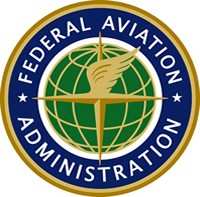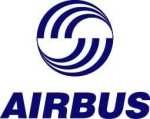New Compliance Date Pushed As Far As April 2012
 Saying it is "seriously disappointed" in major airline
manufacturers, the FAA has re-opened comments on an NPRM that would
require manufacturers to upgrade the digital cockpit voice and
flight data recorders used in commercial aircraft. The new
compliance dates are December 2010 for some aircraft, and April
2012 for others.
Saying it is "seriously disappointed" in major airline
manufacturers, the FAA has re-opened comments on an NPRM that would
require manufacturers to upgrade the digital cockpit voice and
flight data recorders used in commercial aircraft. The new
compliance dates are December 2010 for some aircraft, and April
2012 for others.
The change is in response to comments from half a dozen plane
makers who said in concert that they would be unable to meet the
April 2010 deadline for compliance. The original final rule was
published in the Federal Register March 7th, 2008, and according to
the FAA "53 commenters responded, but only three of them included
any comment about compliance time. Most comments focused on
technical considerations or the cost of compliance rather than the
time proposed. Of the few comments regarding compliance time, one
came from Airbus concerning the installation of the CVR independent
power source for aircraft to be manufactured beginning in April
2010, requesting an increase from two to four years. We replied
that Airbus was the only manufacturer that indicated that the
proposed compliance time was a problem, and that Airbus did not
provide us with any data to support its position that integration
of the power source into newly manufactured aircraft could not be
accomplished in two years. Airbus also commented that the proposed
two-year time frame for integration of increased recording rates of
16 Hertz (Hz) for certain parameters was unrealistic. The FAA
received numerous comments regarding technical considerations of
the increased recording rates (not the compliance time). In the
final rule, we adopted a lower (8 Hz) sampling rate in response to
these comments. The FAA believed that incorporating the 8 Hz rate
into newly manufactured aircraft was achievable in the two-year
compliance time."
 The requests for relief from the compliance deadline began in
May of 2009. The first was from Boeing. In a letter dated May 1,
2009, the company said "[D]ue to the complexity and high level of
integration of the underlying avionics systems, Boeing has
determined that type certificate design changes, certification, and
implementation in production are not feasible for the 777 by the
date in the regulation. As a result, Boeing would not be able to
offer the DLC capability it does now, and its customers would be
unable to achieve the increased quality of controller-pilot
communications that leads to more efficient routing, less fuel burn
and reduced emissions."
The requests for relief from the compliance deadline began in
May of 2009. The first was from Boeing. In a letter dated May 1,
2009, the company said "[D]ue to the complexity and high level of
integration of the underlying avionics systems, Boeing has
determined that type certificate design changes, certification, and
implementation in production are not feasible for the 777 by the
date in the regulation. As a result, Boeing would not be able to
offer the DLC capability it does now, and its customers would be
unable to achieve the increased quality of controller-pilot
communications that leads to more efficient routing, less fuel burn
and reduced emissions."
In a letter dated May 1, 2009, Bombardier, Inc. (Bombardier)
petitioned the FAA to change the part 135 requirements adopted in
the 2008 final rule that require increased sampling rates for two
DFDR parameters (docket number FAA-2009-0441). Bombardier noted
that, although as a manufacturer it is not subject to part 135
since it is an operating rule, it considers itself responsible to
deliver part 135 compliant aircraft to its U.S. customers. Because
the FAA does not grant operational relief to manufacturers,
Bombardier presented its request as a petition for rulemaking to
change the regulatory requirement for its aircraft. Bombardier
found that the increased rates required by the regulation for two
parameters could not be integrated into its BD-700 Model aircraft
by the compliance date without significant system modifications.
Bombardier requested relief for the BD-700 until it is able to
introduce a new avionics suite that is scheduled for installation
beginning in 2011.
 In a letter dated June 11, 2009, Airbus petitioned the FAA on
behalf of the operators of 15 Airbus airplanes to be manufactured
between April 7, 2010 and December 31, 2011, to operate without the
DLC recording capability required by the 2008 final rule. Airbus
cited the same reasons for its request as appear in the Boeing
petitions, that certification and implementation of the design
changes necessary are not feasible by April 7, 2010.
In a letter dated June 11, 2009, Airbus petitioned the FAA on
behalf of the operators of 15 Airbus airplanes to be manufactured
between April 7, 2010 and December 31, 2011, to operate without the
DLC recording capability required by the 2008 final rule. Airbus
cited the same reasons for its request as appear in the Boeing
petitions, that certification and implementation of the design
changes necessary are not feasible by April 7, 2010.
Gulfstream made a similar request in September of last year, and
in October, GAMA petitioned the FAA to amend parts 91 and 135 to
the extent necessary to extend the implementation date for some of
the requirements in the 2008 final rule (docket number
FAA-2009-0963). GAMA stated that "[F]or a number of reasons, a
large segment of the general aviation business aircraft industry
will not be in a position to comply with all aspects of the new
requirements" by April 7, 2010. It cited equipment availability,
resource constraints and greater technical impact than initially
considered. The GAMA sought regulatory relief from the requirements
for DLC recording and for increased DFDR sampling rates.
Similar petitions followed from AIA, Dassault, and Embraer.
In acknowledging these petitions, the FAA has agreed to push the
compliance dates, but used strong language to let the manufacturers
know it was not happy with the development. It wrote in the Federal
Register "The FAA is seriously disappointed with the manufacturers
and other facets of the industry. The identicality and scope of the
various petitions appears as a decision by industry not to comply
with the April 2010 date, a decision that was made some time ago.
Through contact with the petitioners, the FAA was made aware that
one of the current circumstances appears to be the lack of
equipment design and integration that begins with avionics
equipment manufacturers. Most glaringly, in none of the petitions
do the airframe manufacturers indicate that they had properly
planned for regulatory compliance and are petitioning now because
they are unable to obtain timely delivery of the necessary
equipment. Nor is there any evidence that the airframe
manufacturers have pressed the suppliers for timely delivery of
either design modifications or equipment. None of the petitions
addresses the clear failure to plan for and implement a regulatory
requirement that was first proposed in 2005. Only the GAMA petition
states that economic circumstances have changed enough to warrant a
change to the compliance time. Despite a dearth of specific comment
to the proposed rule on compliance time, the FAA is now faced with
the discovery by six major airframe manufacturers that compliance
"is not feasible" less than a year before it is due. There is
nothing to indicate what, if any, efforts the petitioners made in
the 13 months between the publication of the final rule and the
FAA's receipt of the first petition."
Under the new proposed rules, the compliance date for increased
DFDR sampling rates for newly manufactured airplanes operated under
part 121, 125, or 135 would be extended until December 6, 2010. For
airplanes operating under parts 121, 125 or 135, datalink
communications would have to be recorded when datalink
communication equipment is installed after December 6, 2010.
For the ten-minute backup power source for CVRs, the compliance
date for part 91 operators (only) would be extended to April 6,
2012. For increased DFDR sampling rates, the compliance date for
newly manufactured airplanes operated under part 91 would be
extended until April 6, 2012. And for airplanes operating under
part 91, datalink communications would have to be recorded when
datalink communication equipment is installed after April 6,
2012.
Comments are due by February, but the FAA says that only
"[c]omments that include specific, realistic examples of equipment
availability will be considered. These comments should include
detailed information describing the reason for the lack of
equipment availability, other options that have been considered and
the efforts that have been taken to achieve compliance. Generalized
statements, such as the ones presented in the petitions, are not
valid evidence that the industry is unable to comply, only that it
has chosen not to."
 Senator Pushes FAA to Accelerate Rocket Launch Licensing
Senator Pushes FAA to Accelerate Rocket Launch Licensing Classic Aero-TV: RJ Gritter - Part of Aviations Bright New Future
Classic Aero-TV: RJ Gritter - Part of Aviations Bright New Future Aero-FAQ: Dave Juwel's Aviation Marketing Stories -- ITBOA BNITBOB
Aero-FAQ: Dave Juwel's Aviation Marketing Stories -- ITBOA BNITBOB ANN's Daily Aero-Linx (10.27.24)
ANN's Daily Aero-Linx (10.27.24) ANN's Daily Aero-Term (10.27.24): Clearance Void If Not Off By (Time)
ANN's Daily Aero-Term (10.27.24): Clearance Void If Not Off By (Time)





